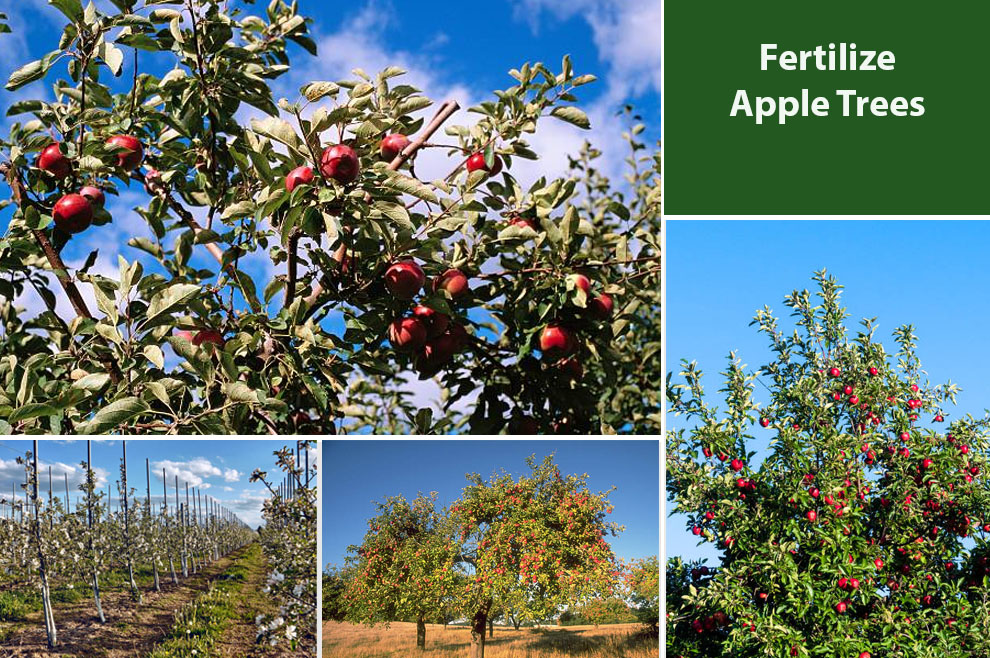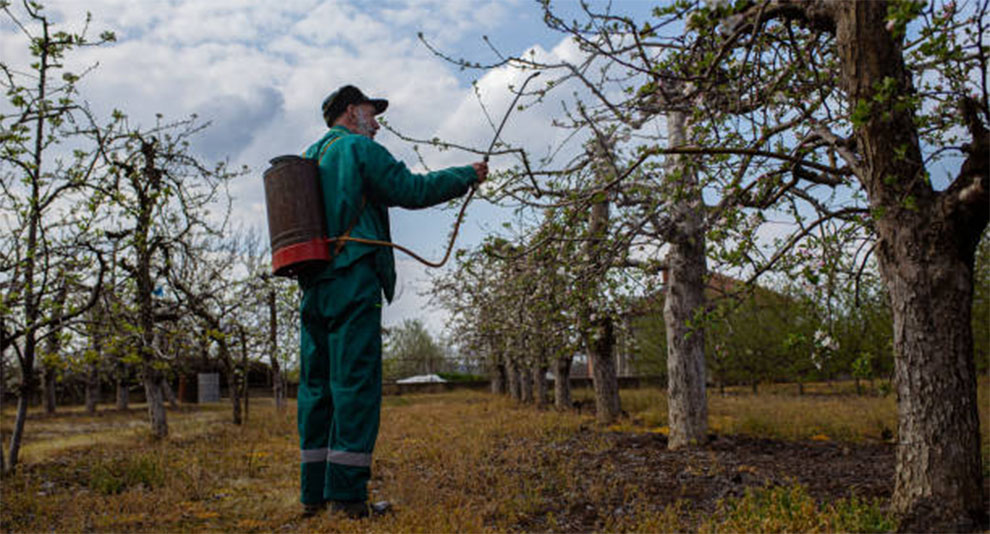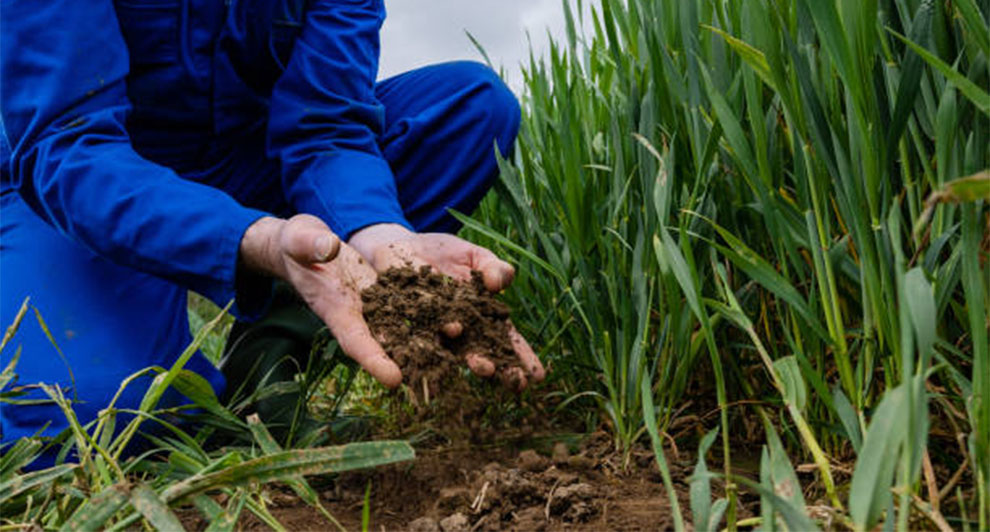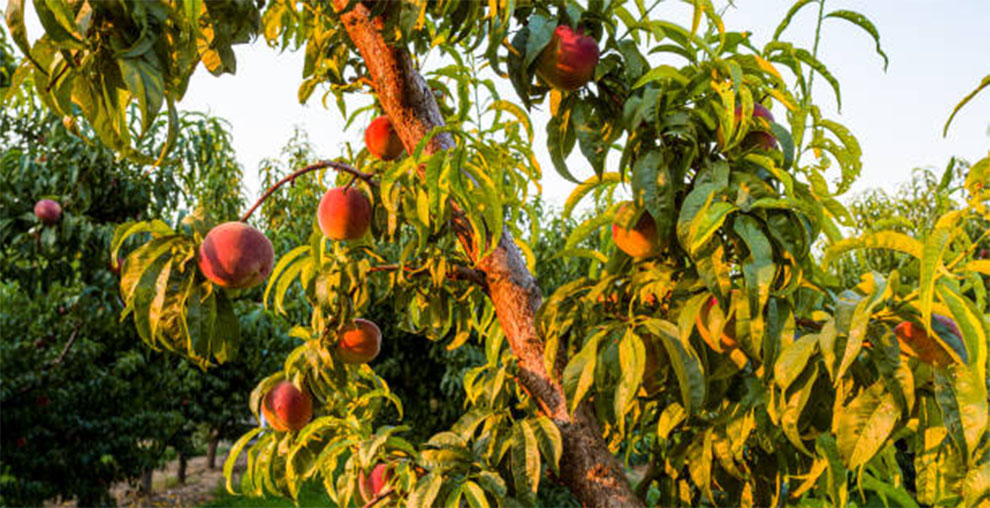When To Fertilize Apple Trees – Right Feed At The Right Time!
Fertilize apple trees in early spring before bud break, with a second application in late spring. Avoid fall fertilization unless a soil test indicates specific deficiencies. Timely feeding them optimizes tree health and fruit production.

Fertilizing apple trees is a crucial aspect of orchard care that directly impacts their growth, fruit production, and overall health.
To ensure your apple trees thrive and yield bountiful harvests, it’s essential to understand how and when to fertilize apple trees effectively. It is suggested to feed apple trees in early spring and avoid fertilizing them in fall.
In this comprehensive guide, we’ll explore the optimal timing of using fertilizers, types of fertilizers, application techniques, and the importance of soil testing in the context of apple tree care.
The Role of Fertilization in Apple Tree Health

Fertilization provides essential nutrients to apple trees, promoting healthy growth and fruit development.
These nutrients, primarily nitrogen (N), phosphorus (P), and potassium (K), along with secondary and micronutrients, are vital for various aspects of tree health:
- Nitrogen (N): Promotes leafy growth, enhances photosynthesis, and helps in the formation of proteins and enzymes.
- Phosphorus (P): Supports root development, flower and fruit production, and energy transfer within the tree.
- Potassium (K): Aids in overall tree vigor, disease resistance, and fruit quality.
- Secondary Nutrients: Calcium (Ca), magnesium (Mg), and sulfur (S) are necessary for various physiological processes.
- Micronutrients: Iron (Fe), manganese (Mn), zinc (Zn), copper (Cu), and boron (B) are required in smaller quantities but are equally essential for proper tree function.
Now, let’s dive into the specifics of when and how to fertilize your apple trees.
When to Fertilize Apple Trees – Timing Matters!
Ensuring the right nutrients at the right time is vital for robust apple tree growth and a fruitful harvest.
Early Spring: The ideal time for the initial application of fertilizer is in early spring, just before bud break.
This is when all kinds of apple trees are actively starting their growth cycle, and they require an ample supply of nutrients to support leaf development, flower bud formation, and overall vigor.
Late Spring: A second application of fertilizer can be beneficial in late spring, typically around May or early June. This additional dose of nutrients helps sustain the tree’s growth and the formation of young fruit.
Fall (Optional): In some cases, a light application of fertilizer in the fall can provide an extra boost for next year’s growth. However, this should be done sparingly and only if your soil test indicates a specific nutrient deficiency.
When To Feed Apple Trees In Pots?
Feed potted apple trees during active growth. Start in early spring when buds appear. Feed every 4-6 weeks until late summer. Stop feeding by August for dormancy.
Resume in early spring when new growth begins. Use balanced, slow-release fertilizer with equal NPK ratios. Follow package instructions carefully.
Monitor soil moisture and adjust watering. Consider micronutrients if soil test reveals deficiencies. Prune and maintain trees regularly.
Repot when they outgrow containers. Adapt feeding based on tree variety and climate. Consistent attention ensures healthy, fruitful potted apple trees.
Related:Apple Tree Lifespan
Soil Testing is Key to Feeding Apple Trees

Before determining the type and amount of fertilizer needed, conducting a soil test is essential.
Soil tests reveal the current nutrient levels and pH of your soil, allowing you to tailor your fertilizer application to your specific tree’s requirements.
Contact your local agricultural extension office or a reputable soil testing laboratory for guidance on collecting and interpreting soil samples.
Choosing the Right Fertilizer for Apple Trees
Selecting the appropriate fertilizer formulation is vital for providing the right nutrients to your apple trees. Common fertilizer types include:
- Complete NPK Fertilizers: These contain balanced amounts of nitrogen (N), phosphorus (P), and potassium (K). For apple trees, a general-purpose formulation like 10-10-10 or 16-16-16 can be suitable.
- Organic Fertilizers: Organic options, such as well-rotted compost, aged manure, or organic pelletized fertilizers, can provide a slow and steady release of nutrients. They improve soil structure and microbial activity.
- Specialty Fertilizers: Specialty products tailored to fruit trees, like 8-3-9, provide the specific nutrients apple trees need for optimal growth and fruiting.
- Custom Blends: Based on your soil test results, you can create a custom fertilizer blend to address specific nutrient deficiencies.
You can check out our recommendation for some of the best apple tree fertilizers here.
How to Feed Apple Trees?
We have discussed when do you fertilize apple trees, now let’s focus on how to do it. The way you apply fertilizer directly affects its effectiveness and minimizes the risk of over-fertilization.
Here are some essential tips:
- Broadcast Application: Spread the fertilizer evenly in a circular pattern around the drip line (the outer edge of the tree’s canopy). Avoid direct contact with the trunk to prevent injury.
- Split the Dose: If you plan to make multiple applications in a year, divide the total amount of fertilizer into smaller doses to provide a steady supply of nutrients throughout the growing season.
- Water After Application: Watering the area thoroughly after applying fertilizer helps to incorporate the nutrients into the soil and reduces the risk of nutrient runoff.
- Avoid Piling: Do not pile fertilizer around the base of the tree, as this can cause root damage and nutrient imbalance.
- Timing is Critical: Apply fertilizer when the soil is moist but not saturated. Avoid fertilizing during drought conditions or immediately before heavy rainfall.
- Use Slow-Release Formulations: Slow-release fertilizers provide a consistent nutrient supply over an extended period, reducing the risk of nutrient leaching.
Common Mistakes to Avoid While Fertilizing Apple Trees

While fertilizing apple trees is essential, there are common mistakes that orchardists should avoid to ensure the best results:
1. Over-Fertilization:
Applying excessive amounts of fertilizer can lead to nutrient imbalances, root damage, and increased susceptibility to pests and diseases. Always follow recommended application rates based on soil test results.
2. Ignoring Soil Testing:
Neglecting soil testing can result in blind fertilization, where you apply nutrients without knowing if they are needed. Soil testing provides valuable insights into your soil’s health.
3. Timing Errors:
Applying fertilizer too early or too late in the season can be counterproductive. Proper timing aligns with the tree’s growth stages.
4. Neglecting Young Trees:
Young apple trees require more frequent fertilization to establish strong root systems. Don’t assume that they need the same treatment as mature trees.
5. Poor Application Techniques:
Improper spreading, piling fertilizer against the trunk, or failing to water after application can lead to uneven nutrient distribution and tree stress.
Fertilizing apple trees is a fundamental aspect of orchard management that directly impacts their growth and fruit production.
By understanding the importance of timing, conducting soil tests, selecting the right fertilizer, and applying it properly, you can ensure your apple trees receive the nutrients they need for optimal health and abundant harvests.
Remember that responsible fertilization practices not only benefit your trees but also contribute to sustainable and fruitful orchards.
